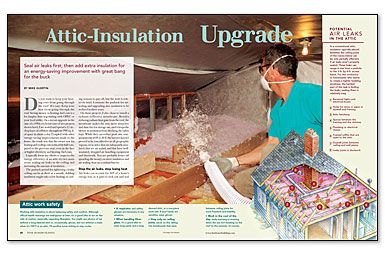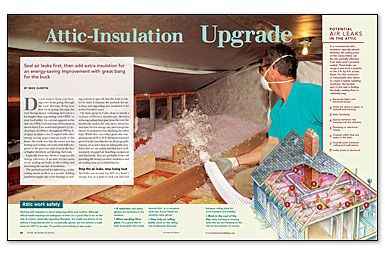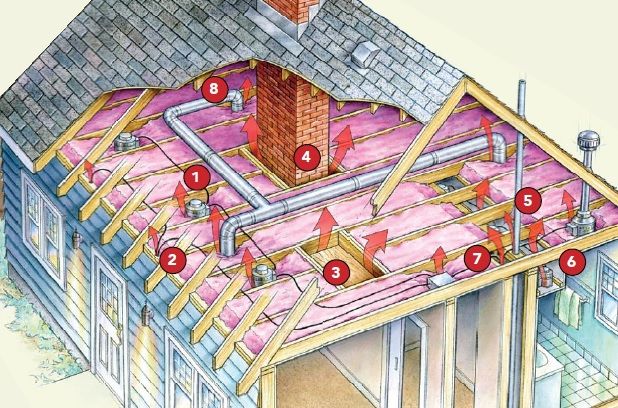
The benefits of insulating an attic are well known. An insulated attic keeps a home cooler in the summer, warmer in the winter and saves money in the process. When some of the finer points of the process are missed, however, the overall effectiveness of insulating is compromised. The eight-point list below is a sidebar from a Fine Homebuilding article by Mike Guertin that outlines a two-step process used to insulate an attic for maximum benefit. As the author puts it: “Seal air leaks first; then add extra insulation for an energy-saving improvement with great bang for the buck.” Fine Homebuilding Online Members can view the entire article here.
Potential Air Leaks in the Attic
by Mike Guertin
In a conventional attic, insulation typically placed between the ceiling joists of the rooms below can be only partially effective if air leaks aren’t properly sealed. These air leaks can range in size from a pinhole to the 3-ft. by 4-ft. access hatch. For the contractor or homeowner who wants to create a tighter building envelope, the hardest part of the task is finding leaks; sealing them is relatively easy.
- Recessed lights and electrical boxes
- Holes for wires or pipes in drywall and framing
- Attic hatchway
- Spaces between the framing and the chimney
- Plumbing or electrical chases
- Framed soffits that are open to the attic
- Drywall joints between ceiling and wall plates
- Leaky joints in ductwork
Fine Homebuilding Recommended Products
Fine Homebuilding receives a commission for items purchased through links on this site, including Amazon Associates and other affiliate advertising programs.

Affordable IR Camera

Handy Heat Gun

Reliable Crimp Connectors






























View Comments
great job
Incredible workk
I'm impressed!!!